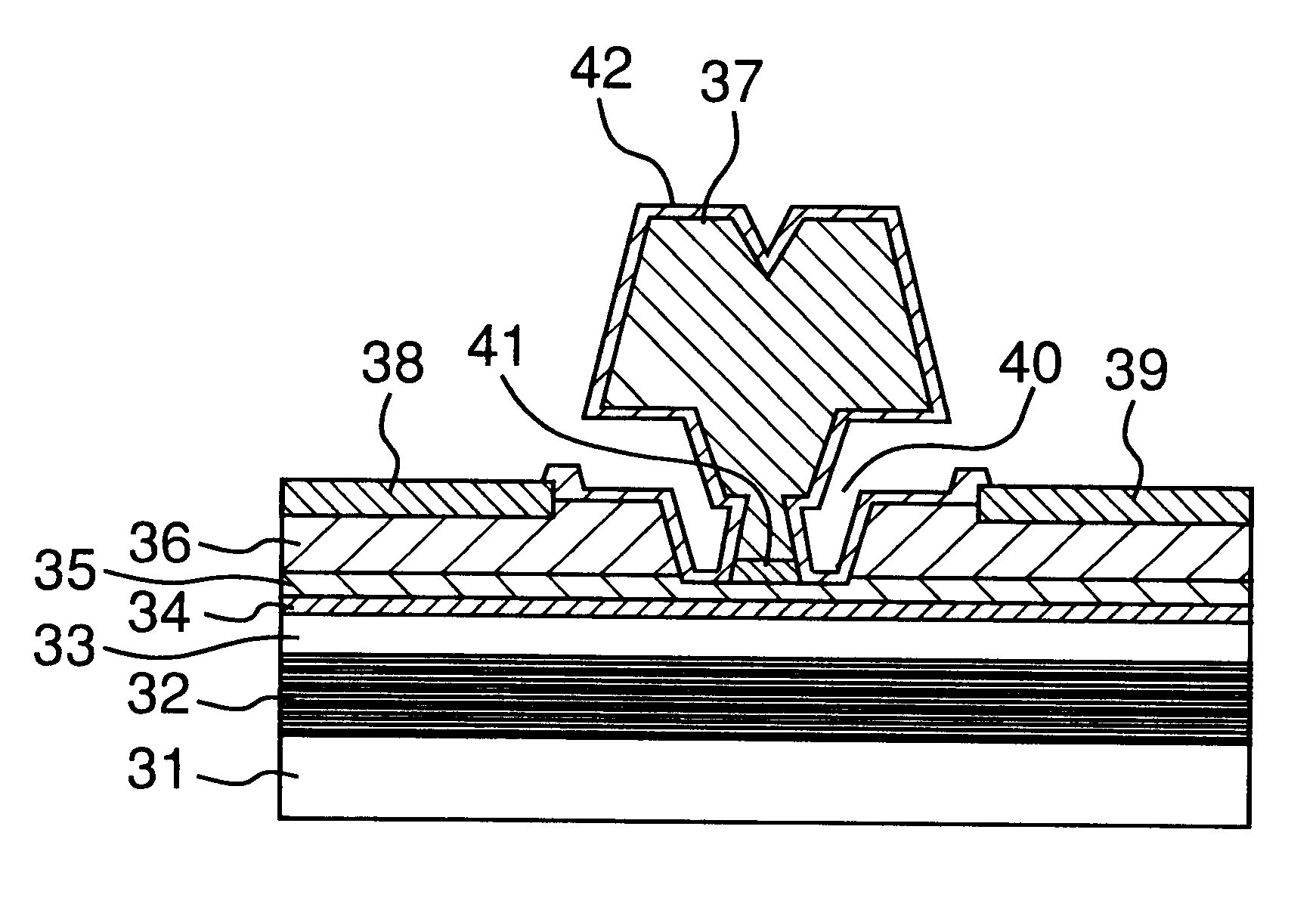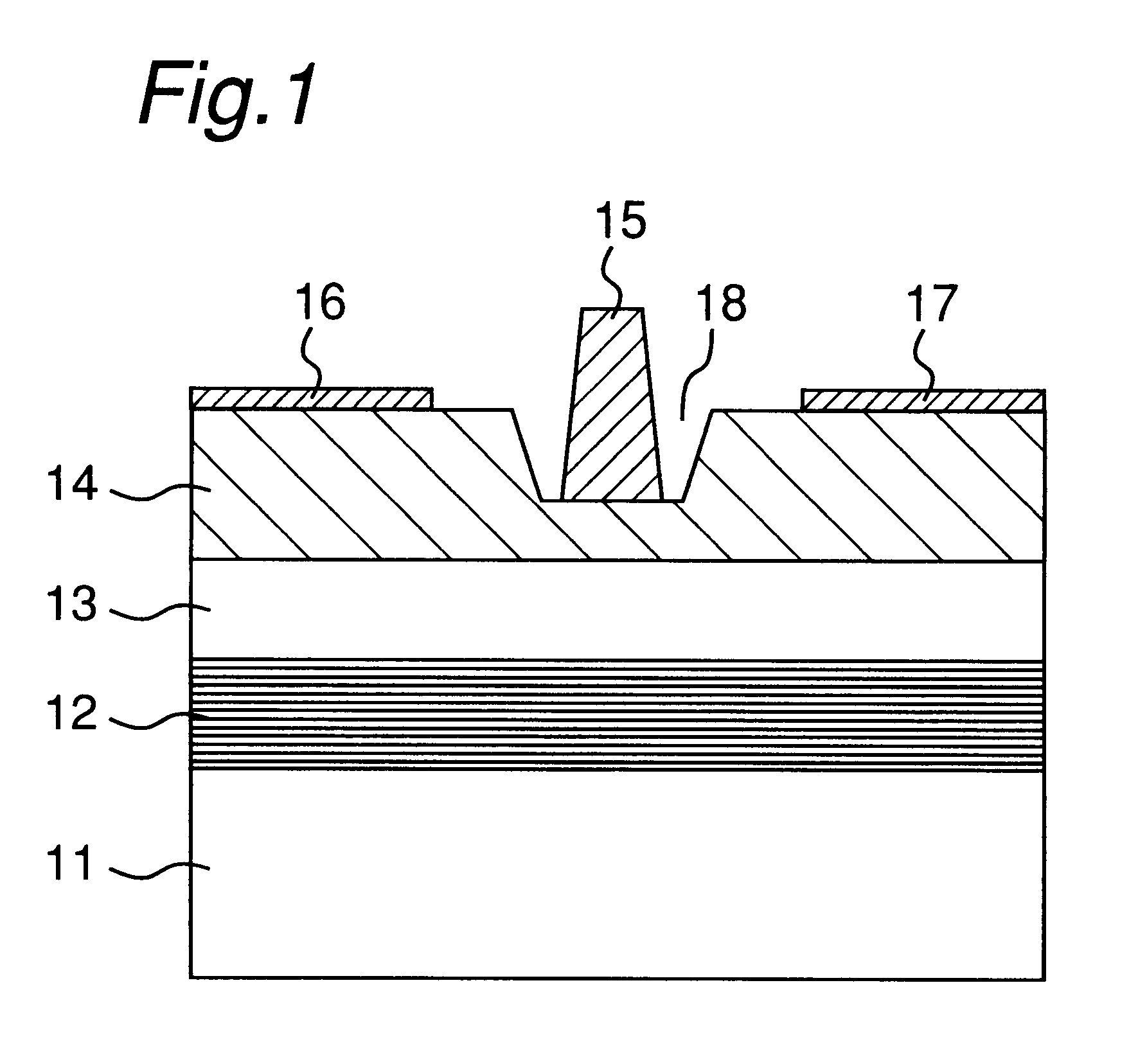Field effect semiconductor device
a semiconductor device and field effect technology, applied in the field of field effect transistors, can solve problems such as free electron leakage below, and achieve the effect of higher resistan
- Summary
- Abstract
- Description
- Claims
- Application Information
AI Technical Summary
Benefits of technology
Problems solved by technology
Method used
Image
Examples
second embodiment
FIG. 5 is a schematic diagram of a GaAs low noise FET (HEMT) according to the invention. On a semi-insulating GaAs substrate 31, a superlattice buffer layer 32 is fabricated by forming 40 layers wherein AlGaAs layers mixed with 2*10.sup.17 cm.sup.-3 of oxygen (of thickness of 15 nm) and GaAs layers (of thickness of 5 nm) are formed alternately. An undoped GaAs layer 33 (of thickness of 300 nm) and an undoped InGaAs channel layer 34 are formed on the superlattice layer 32. On the channel layer 34, an n-AlGaAs layer 35 and an n.sup.+ -GaAs layer 36 are formed further. A recess groove 40 is formed at the center of the n.sup.+ -GaAs layer 36, and a gate electrode 37 is formed at the center of the recess groove 40. In order to improve the Schottky junction, a TiAl layer 41 is formed between the gate electrode 37 and the n-AlGaks layer 35. Further, a source electrode 38 and a drain one 39 are formed on the n.sup.+ -GaAs layer 36 at both sides with respect to the recess groove 40. A passiv...
first embodiment
FIGS. 12 to 15 show measurement data of photoluminescence for explaining an effect of low temperature growth. FIGS. 12 and 13 show comparison data when the superlattice buffer layer is grown at the conventional growth temperature (T.sub.g =560.degree. C.). FIG. 12 shows measurement data when the oxygen concentration in the AlGaAs layer in the superlattice buffer layer is smaller than 2*10.sup.16 cm.sup.-3, and FIG. 13 shows measurement data when the oxygen concentration is smaller than 1*10.sup.17 cm.sup.-3 (in correspondence to the first embodiment). On the other hand, FIGS. 14 and 15 show measurement data when the oxygen concentration in the AlGaAs layer is smaller than 2*10.sup.16 cm.sup.-3 and when the growth temperature of the superlattice buffer layer is lower by 100.degree. C. and by 200.degree. C., respectively, than the cases shown in FIGS. 12 and 13. It is apparent that the data shown in FIG. 14 has the peak intensity decreased to about a half of the data shown in FIG. 12 ...
PUM
 Login to View More
Login to View More Abstract
Description
Claims
Application Information
 Login to View More
Login to View More - R&D
- Intellectual Property
- Life Sciences
- Materials
- Tech Scout
- Unparalleled Data Quality
- Higher Quality Content
- 60% Fewer Hallucinations
Browse by: Latest US Patents, China's latest patents, Technical Efficacy Thesaurus, Application Domain, Technology Topic, Popular Technical Reports.
© 2025 PatSnap. All rights reserved.Legal|Privacy policy|Modern Slavery Act Transparency Statement|Sitemap|About US| Contact US: help@patsnap.com



